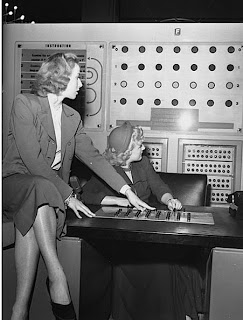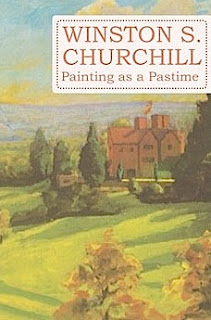Sold this item about 10 years back for $500. Possibly worth a whole lot more now. The game is the same as the match-stick game being played in the movie L'Année Derniere a Marienbad and is said to have originated in ancient China where it was known as Tsyanchidzi the 'picking stones game.' The match game can now be played online at the Archimedes' Lab site. Good luck if you can beat your computer there!
THE FERRANT NIMROD DIGITAL COMPUTER
Computer manual. Original booklet from The Festival of Britain, 1951 with the words "FASTER THAN THOUGHT." on cover with the Festival's symbol.
Revealed to the public as part of the Science Exhibition at the Festival of Britain in 1951, the Ferranti Nimrod Computer was the first ever computer game - a machine built exclusively for the purpose of playing a computerized version of the logical game of 'Nim'.

(From the booklet) The game is for two players, being played nowadays with matches. At the beginning of the game one of the players arranges the matches in any number of heaps in any way he chooses. The players then move alternatively taking any number of matches from any one heap but at least one match must always be taken. In the normal simple game the player who succeeds in taking the last few matches wins but in the reverse simple game the player who takes the last match or matches loses.
Nimrod could play all the variations of the game and at the exhibition members of the public were invited to play against the machine; at the end of each game the computer would flash up the message 'COMPUTER WINS' or 'COMPUTER LOSES'. When the famous British scientist and ENIGMA codebreaker Alan Turing played it he managed to beat the computer, although witnesses were amused by a malfunction whereby Nimrod 'changed its mind' from 'COMPUTER LOSES' to 'COMPUTER WINS' and refused to stop flashing.
The booklet, which was sold at the exhibition for a shilling and sixpence, is a detailed guide to the machine and how it plays the Nim game, preceded by a more general introduction to the emergent sciences of computing and artificial intelligence. As an indication of how early the language is, it could be noted that the term 'memory' is mentioned only as an alternative to the preferred term 'storage'. Rare - so elusive that it is not listed by Hook and Norman in their compilation of the most exhaustive bibliography of computer literature to date, The Origins of Cyberspace.
 |
| Two Windmill Girls play Nim at the Festival of Britain |








